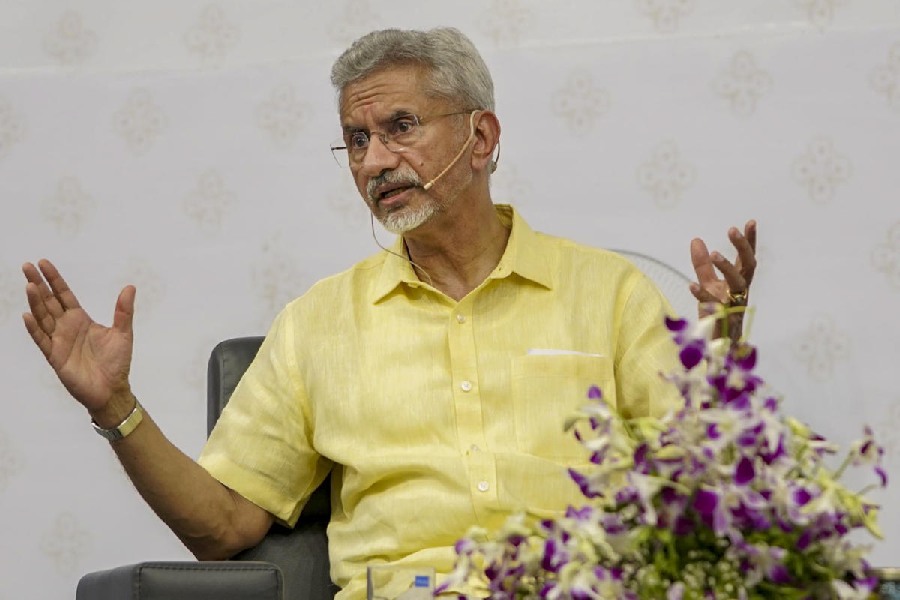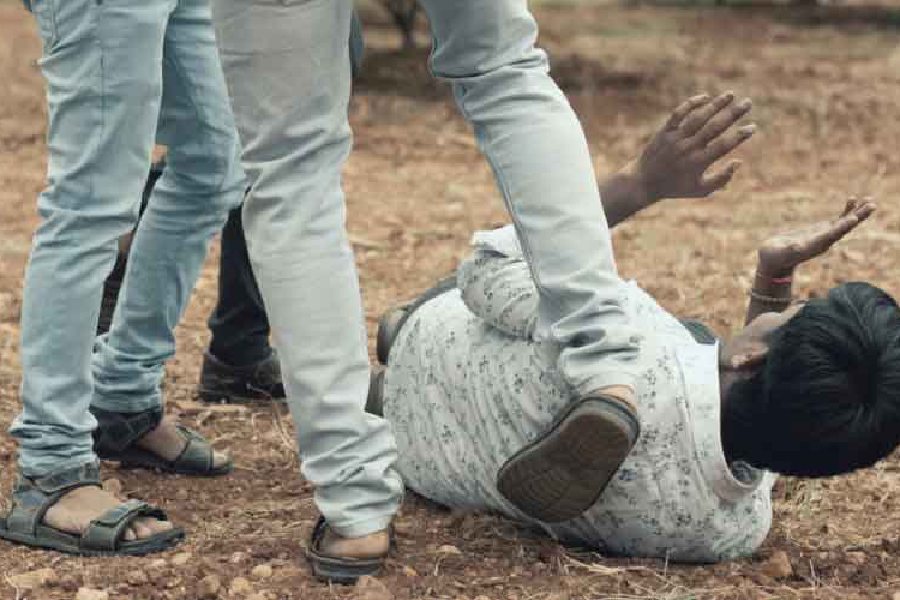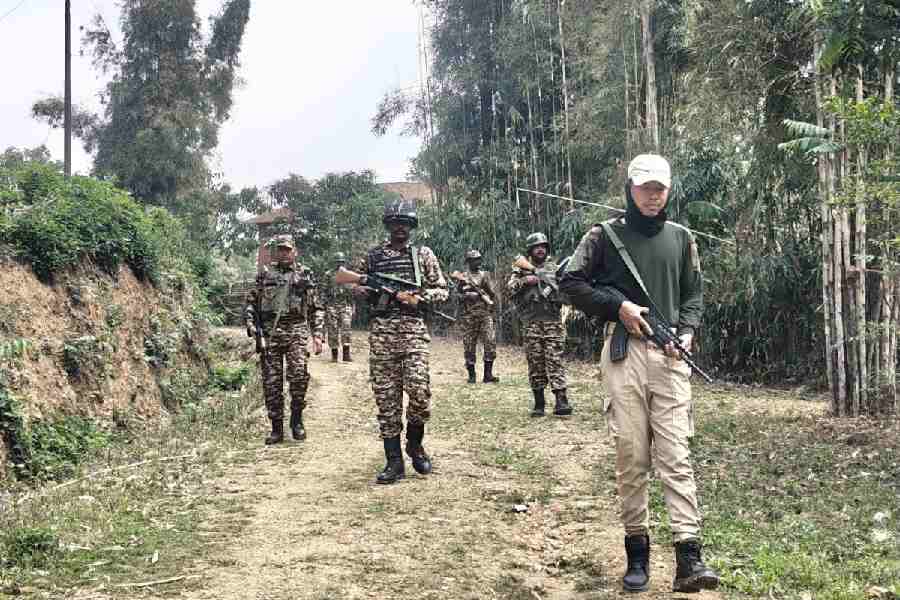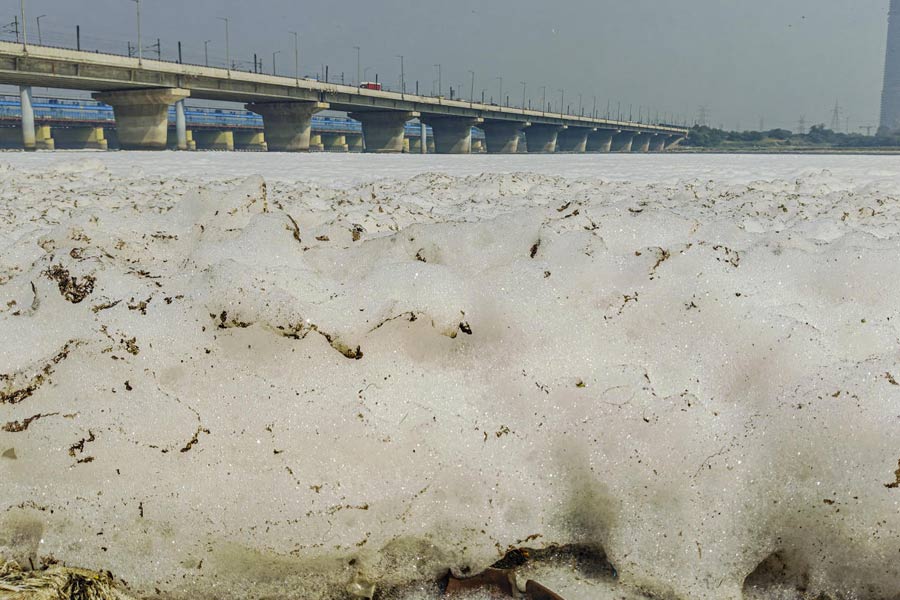
A file picture of Harendra Prasad Sinha inspecting the megalithic site at a temple in Bhasko village of Lohardaga where digging work is on the anvil
Ranchi, March 22: An ancient temple in a Lohardaga village, some 100km from Ranchi, may be holding the key to our ancestors from the early Iron Age who walked on Earth roughly between 1000BC and 200BC.
The Archaeological Survey of India (ASI) has granted eminent history digger Harendra Prasad Sinha permission to excavate the megalithic site on Prachin Shiva Mandir premises in Bhasko village. A letter dated February 27 and signed by Dr Syed Jamal Hasan, ASI director (exploration and excavation), says Sinha can carry out digging in collaboration with the state department of archaeology and submit a report within six months of completion of work.
'The temple, which is located some 4km from the office of the (Lohardaga) deputy commissioner, houses ancient stone sculptures of Uma-Maheshwara and Shivalingams dating back to 15th or 16th Century AD. The remains that we may find at this site can throw light on the hitherto unknown history of Jharkhand,' Sinha, retired deputy director of archaeology in the state art and culture department, told The Telegraph.
Sinha had stumbled upon the site in 2010 during one of his visits to Lohardaga. 'I had been summoned by the district administration to identify a strange stone that labourers digging a well had found. I was excited, but it did not last long because the stone I saw had no historical value. Then, as I strayed into nearby Bhasko village, a circle of stones covered by shrubs caught my eye,' the sexagenarian recalled.
And, once the place was cleared of undergrowth, history sprang to life. 'These megaliths should date back to the 1st Century AD. I remember similar stone circles being found in Karnataka and Andhra Pradesh, which yielded a rich cache of pottery, iron spears and tools dating back to 800BC and 600BC. I continued my research on megaliths, which are strewn all over Jharkhand - in Singhbhum, Ranchi, Chatra, Lohardaga, Hazaribagh and many other places. Finally, I am ready to begin digging,' he said.
In layman language, a megalith is a memorial of the dead. Excavations at megalithic sites around the world, from Scotland to Karnataka, have revealed that the ancient man created a stone vault deep inside the earth, where the dead were placed on stone slabs. Pots, probably stuffed with food for another life that they believed in, iron tools and weapons, and even hooves of horses and saddles have been found inside theses vault. The burial place was finally covered with earth and marked by either a large standing stone or a number of stones in a circle; or like a tabletop with a giant stone resting on two or more smaller stones.
'Interestingly, no habitation has yet been found near these burial sites anywhere in the world. So, it is presumed that these men were either nomads or mercenaries who fought for ruling clans, buried their dead, marked the sites with giant stones and moved on. Since iron tools have always been found at these sites, it is also presumed that such a type of burial was in vogue during the Iron Age,' the archaeologist said.
Surprisingly in Jharkhand, the megalithic form of burial is popular in the Munda tribe. Even today, the tribesmen continue to mark a grave with stones, which makes speculations rife that the Mundas in Jharkhand may be direct descendants of the Stone Age man.
'I have applied for permission from the deputy commissioner to carry out excavation on the temple premises. I expect it to be granted any day now. Excavation work shall commence within 10 days from the day I receive the nod. I do not know the end result, but I hope to make a valuable addition to history. After Lohardaga, my next destination will be Chatra,' Sinha said.
The eminent archaeologist had retired as the deputy director of archaeology in 2011. Post-retirement, he was on contract with the state government till May 2013. Sinha has been associated with unearthing remains of Nagvanshi rulers at Bero, Ranchi, and archaeological relics dating back to the 12th Century AD at Pithoria on Ranchi-Patratu Road.










